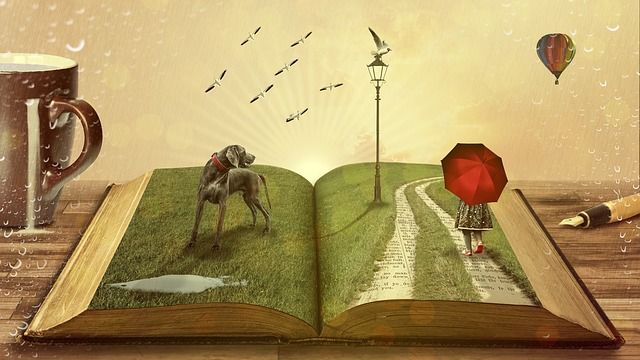[dt_button link=»http://d165vjqq8ey7jy.cloudfront.net/mp3/33168/se-7901s.mp3″ target_blank=»true» button_alignment=»default» animation=»fadeIn» size=»small» style=»default» bg_color_style=»custom» bg_color=»#333333″ bg_hover_color_style=»custom» bg_hover_color=»#444444″ text_color_style=»custom» text_color=»#ffffff» text_hover_color_style=»custom» text_hover_color=»#dddddd» icon=»fa fa-cloud-download» icon_align=»left»]Скачать[/dt_button]
[dt_divider style=»thin» /]
Transcript:
Voice 1
Welcome to Spotlight. I’m Liz Waid.
Voice 2
And I’m Bruce Gulland. Spotlight uses a special English method of broadcasting. It is easier for people to understand, no matter where in the world they live.
Voice 1
Alone in her room, a young girl sits down and begins reading a book. The book is a very famous one. It is called “Roll of Thunder, Hear My Cry.” It tells the story of Cassie Logan and her family. They live in the United States in the 1930s. And they are African Americans. In those times, the state of Mississippi had a severe problem with racism. The government allowed people to make life difficult for African Americans, and people with darker skin colour. Often, groups of white men killed black men and women without punishment. It was a very frightening time.
Voice 2
But the young girl does not know this. She knows little about American history. She is growing up many years later, in the 1970s. The situation in the United States has improved. But reading the book helps the young girl understand Cassie Logan’s fear, and her other emotions. The girl reading is white. She lives in a very small town, where there are no black people. But the book helps her see what it is like to be different. When she finishes the book, she is crying. That night, she tells herself she will never judge another person by what they look like. The book has changed her life. Today’s Spotlight is on how reading can help people understand each other.
Voice 1
There is a name for the emotion the girl felt while reading the book. It is empathy. There are two different kinds of empathy. The first lets people sense other people’s emotions. It is what happens when we feel sad because another person is sad. Or it helps us understand that a person is angry, even when they will not say.
Voice 2
The second kind of empathy is called cognitive empathy. This is what happens when a person reads a book. Cognitive empathy happens when a person tries to identify and understand another person’s emotions. Some people even imagine that they are the other person. There is even an old English idiom for cognitive empathy: taking a walk in another person’s shoes. It means to imagine that you have lived their life.
Voice 1
Scientists do not yet know exactly what happens in a person’s brain when they feel empathy. It is a very complex process. But scientists have observed it happening. They believe empathy involves a brain cell called a mirror neuron. These cells work when we observe other people. Mirror neurons send messages through the brain. This is called “firing”. When these cells fire, they help us to identify emotions we see. But the same kind of cell also fires when we HAVE that emotion. So, when we are sad, a mirror cell will fire. But when we see someone who is sad, that same cell fires. We can understand an emotion. And through mirror neurons, we feel that emotion ourselves.
Voice 2
Empathy is very important in society. Without empathy we would not help each other. We would not care for each other. As a feeling, empathy makes us want to help. It makes us want the world to be a better place.
Voice 1
Barack Obama is the former president of the United States. In 2006, he made a speech to the graduates of Northwestern University. He described how empathy influences how people act.
Voice 3
“Think of a child who is hungry or the steel worker who no longer has a job. Or think of the family whose home was destroyed by a storm. When you have empathy, it does not matter if they are close friends or far-away strangers. It is difficult not to act. It is hard not to help.”
Voice 2
Most people have empathetic feelings. But people can train themselves to be more empathetic. However, this takes work. Meeting people who are different than we are is one way to gain empathy. But distance often divides people. So it is difficult for people to understand each other when they never meet.
Voice 1
Reading may be a solution for this. The girl who read “Roll of Thunder, Hear my Cry”, did not know any African Americans. But the book helped her understand the life of a person who was. Cassie Logan was not a real person. But her situation was real. And the girl understood Cassie’s feelings. From the book, the girl learned a little of what it was to be African American. She felt like she could understand.
Voice 2
David Kidd is a psychologist. He studies the science of how people behave. Kidd works at the New School for Social Research in New York. In 2012, he helped show that reading increases empathy. In a test, he made people read different kinds of books. Some of these books were literary fiction, or complex invented stories. These stories made people think about the emotions of the characters in them. After reading these literary fiction books, the people were better able to understand what other people were thinking. And they could more easily identify emotions.
Voice 1
Keith Oatley is another psychologist. He also studies how reading connects to empathy. He tells the Washington Post newspaper,
Voice 4
“When we read about other people, we can imagine that we are in their position. We can imagine what it’s like being that person. That lets us better understand people and to work together better.”
Voice 2
Many studies say that the effect of reading on empathy only works for complex fictional, or invented, stories. That is because this kind of writing concentrates on a character’s thoughts and feelings. This helps the reader to feel like they are inside the character’s head and thoughts. This produces the effect that leads to empathy.
Voice 1
Today, many scientists believe that books are good tools for increasing empathy. But for readers, and many writers, this is not a new discovery. Together, they have made and explored new worlds and places. They have looked at how different people think and live. Stories have taken them places they may have never gone before.




